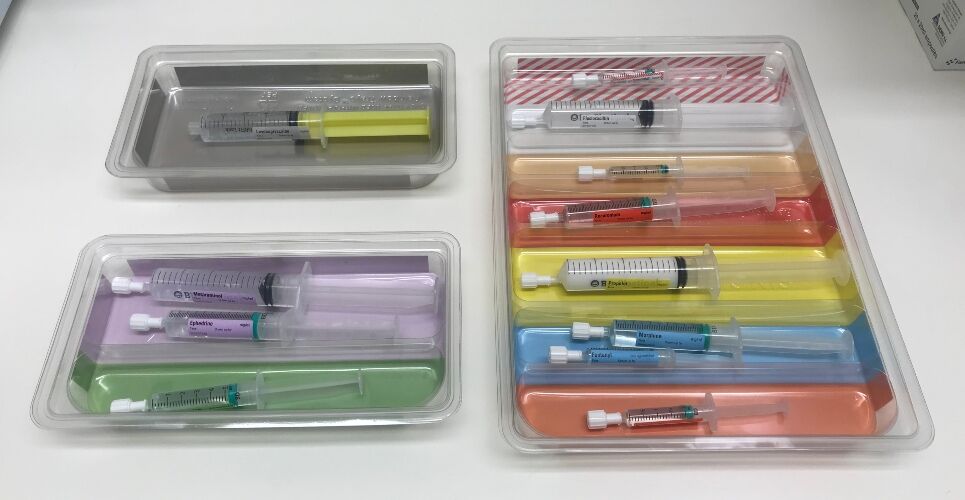New guidelines on the handling of injectable medicines used in anaesthesia, which provide pragmatic safety steps for practitioners within the operative environment to help reduce errors, have been published in the journal Anaesthesia.
Peri-operative injectable medication safety is vital yet a complex process and in order to avoid medication errors, it requires a system- and practitioner-based approach. As a result, the Association of Anaesthetists, together with UK bodies including NHS England, pharmaceutical organisations and the Royal College of Anaesthetists, have produced clear advice on how to reduce avoidable errors in every step of the pathway involving the injectable medications used routinely in anaesthesia care.
Although two-person checking is a common practice in many areas of healthcare, the preparation of medication that includes the transfer from labelled ampoules into unlabelled syringes is normally a sole pursuit undertaken by an anaesthetist.
This clearly introduces the potential for error and the authors of the new guidance say that labelling errors have been noted in around 1-1.25% of peri-operative medication administrations and medication substitutions in 0.2% of administrations during anaesthesia. Therefore, considerable emphasis has been placed on reducing medication errors via a systematic approach.
Part of the guidance highlights the importance, utility and enhanced safety offered by prefilled and labelled medication syringes, as well as the use of aids such as colour-coded medication trays that can help the anaesthetist correctly organise the syringes before and during anaesthesia. Neither of which are yet in widespread use in the NHS.
In addition, the guidance emphasises that medication safety does not depend solely on the individual practitioner, but that many departments within the hospital should also contribute to safe systems.
When it comes to pharmacy’s role, for example, the guidance suggests that, if feasible, a medication safety officer should liaise with a designated pharmacy procurement professional and a clinical pharmacist in the department of anaesthesia over all decisions relevant to medication purchasing and presentation.
Injectable medication guidance
The new guidance provides eight key recommendations:
- Safe handling of medicines requires clear institutional policy within multiple departments as well as careful individual practice
- Departments of anaesthesia should have policies for safe handling of medicines
- Pharmacy departments should promote purchasing for safety, consistent supply and purchase from those companies complying with good labelling practice
- Prefilled syringes have multiple advantages, and their purchase and use should be promoted
- Standardisation of fit-for-purpose physical structure and medicine storage in workplaces should be developed
- Technological solutions that reduce the opportunity for error should be explored and adopted whenever possible
- Standardisation of practice for syringe labelling and handling should be promoted and should form part of the curriculum for training anaesthetists. This should reduce the risk of errors when anaesthetists work together
- Individual anaesthetists may have characteristics that affect their working; these should be recognised by the individual as well as their department, and suitable adjustments to practice made.
The authors suggest that their guidelines aim to provide pragmatic safety steps for practitioners and other individuals within the operative environment, as well as short- to long-term goals for development of a collaborative approach to reducing errors. It is also hoped that the guideline will be used as a basis for instilling good practice.
The authors said: ’“First do no harm“ is what doctors strive for. We hope that these guidelines provide useful points for anaesthetists’ individual practice, while acknowledging that patient safety also relies on supportive systems within their hospitals.’
Image credit: Dr Mike Kinsella.

